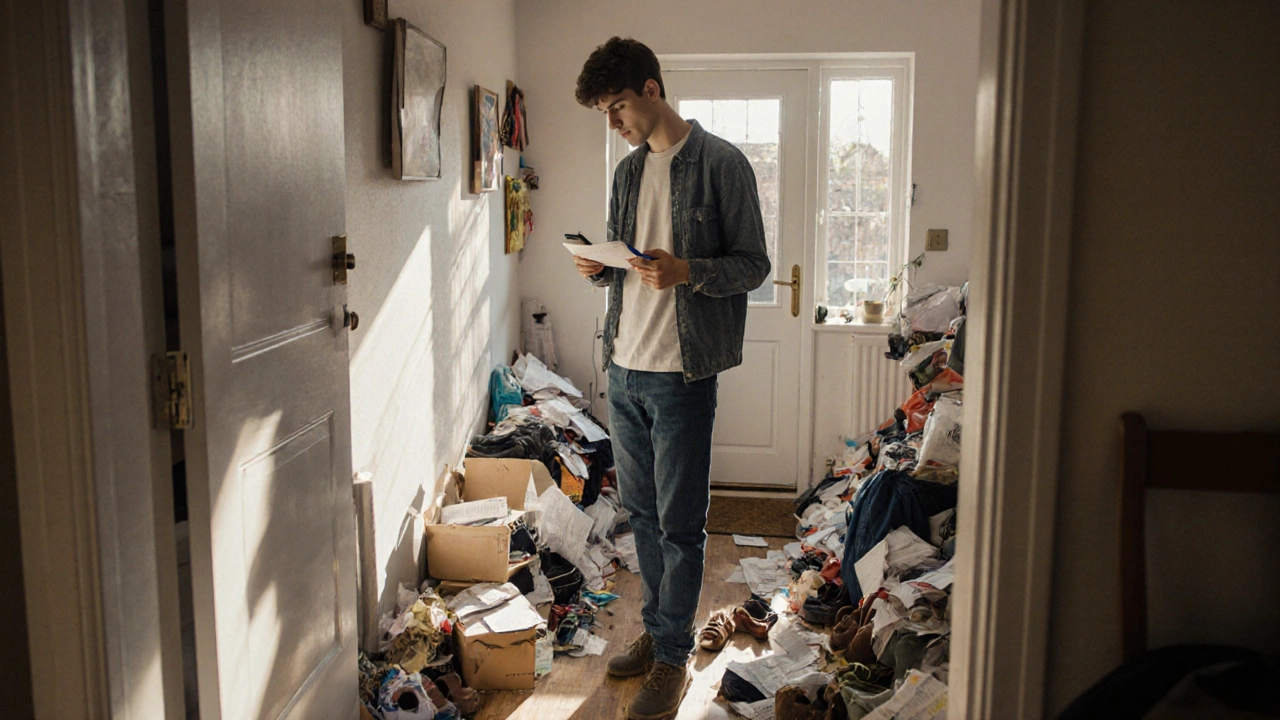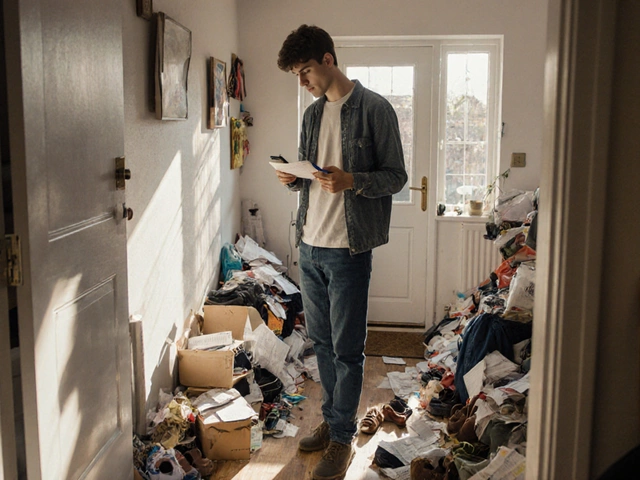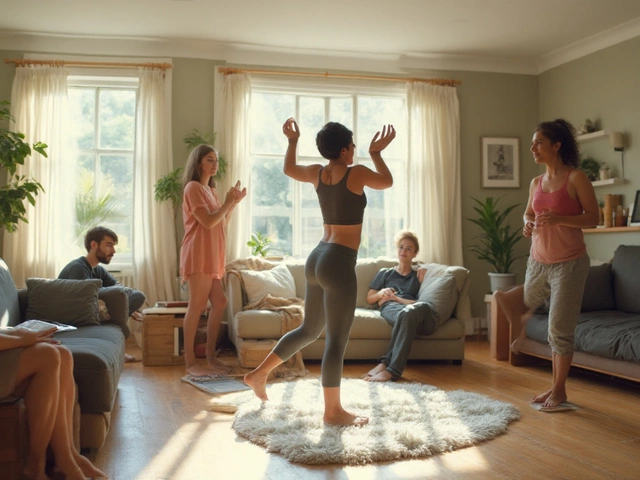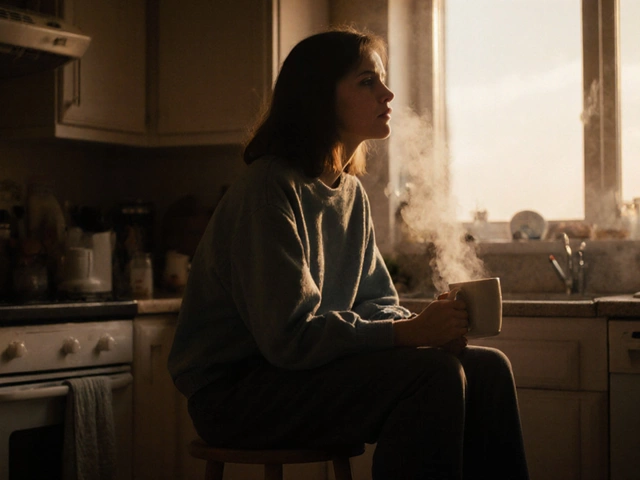Declutter Room Selector Calculator
How to Use This Tool
Score your rooms on Visibility, Clutter Volume, and Emotional Impact (1-5). The room with the highest total gets the best recommendation.
Room Scorecard
Recommendation
Enter your scores and click 'Calculate' to see which room to declutter first.
Recommended Room
Why This Room?
Staring at piles of stuff and not knowing where to start can feel paralyzing. The trick isn’t to tackle the whole house at once - it’s to pick the right room to declutter first, so the momentum carries you through the rest of the project.
Why the First Room Matters
Choosing the opening room sets the tone for the entire process. A quick win boosts confidence, while a high‑impact space shows visible results that keep the energy flowing. In other words, the first room should balance ease of execution and potential to transform daily life. This dual focus is the core principle behind successful home organization.
Evaluate Your Spaces with a Simple Scorecard
Grab a pen or your phone and score each room on three criteria:
- Visibility - How often do you use the room?
- Clutter Volume - Roughly how many items are out of place?
- Emotional Impact - Does the mess stress you out?
Give each factor a rating from 1 (low) to 5 (high). Add the numbers and note the total. The highest scores point to rooms that will give you the biggest payoff for the effort.
Quick‑Win Rooms: Start Small and See Fast Results
These spots usually score low on volume but high on visibility. Clearing them creates an instant sense of order without overwhelming you.
- Entryway - A tidy entryway means you won’t trample over shoes or mail each time you come home.
- Bathroom countertop - Clearing toothpaste tubes and products frees up space for daily routines.
- Kitchen drawer - Removing mismatched utensils turns cooking into a smoother experience.
Spend no more than an hour on each quick‑win. Use a three‑box method - Keep, Donate, Trash - to stay focused.
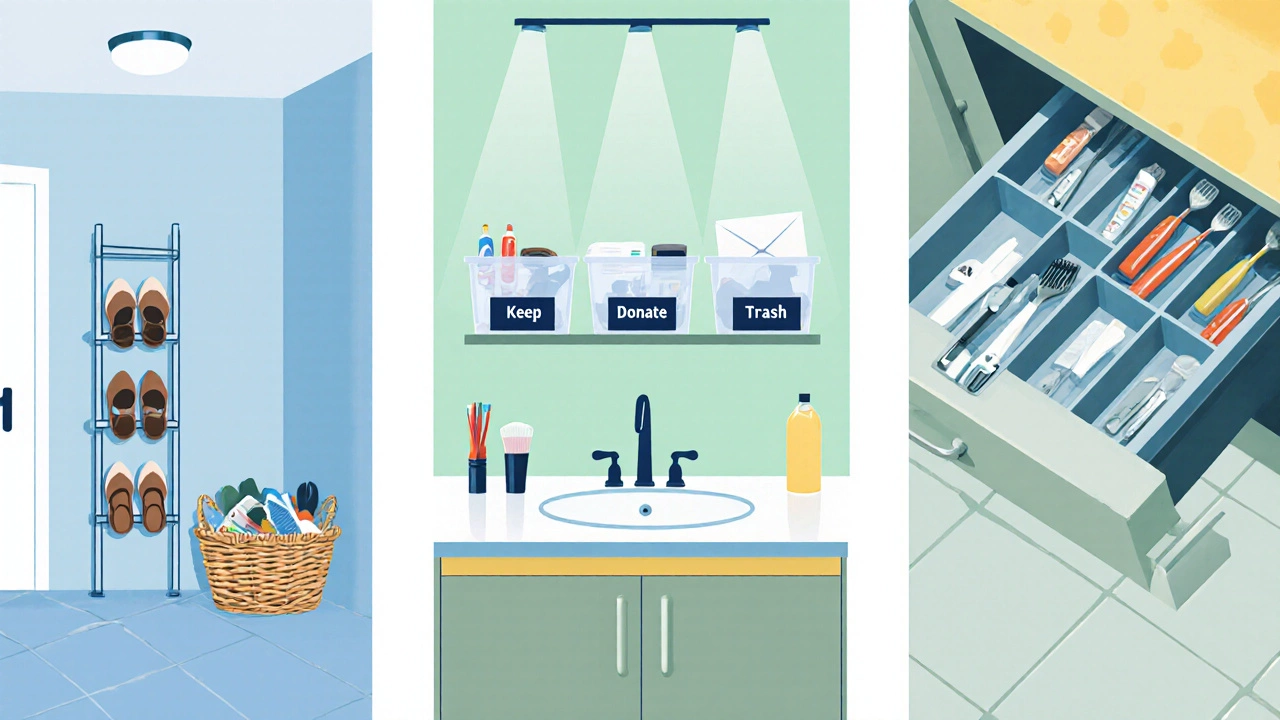
High‑Impact Rooms: Where the Change Feels Huge
These areas often have a high clutter volume and a strong emotional impact. Decluttering them may take a full weekend, but the transformation is worth it.
- Living Room - As the family hub, a neat living room reduces stress and creates a welcoming vibe for guests.
- Bedroom closet - A streamlined closet makes dressing easier and cuts down on morning frustration.
- Home office - Clear surfaces boost productivity and help you focus on work or study.
Apply the same three‑box method, but give yourself extra time for sorting through sentimental items. If you’re stuck, ask yourself whether each piece serves a purpose or simply fills space.
Step‑by‑Step Declutter Plan
- Set a realistic deadline - e.g., “I’ll finish the entryway by Friday evening.”
- Gather supplies - boxes for donations, trash bags, a timer, and a cleaning cloth.
- Empty the room completely. Lay items on the floor or a large surface.
- Sort into Keep, Donate, Trash. Be honest: if you haven’t used it in a year, it likely belongs in Donate or Trash.
- Clean the empty space - wipe surfaces, vacuum, or sweep.
- Return only the items you truly need, arranging them in a logical order.
- Dispose of trash and schedule a donation pick‑up within 48 hours to avoid second‑guessing.
Repeat the cycle for the next room on your scorecard. Each completed room adds to the momentum.
Pro Tips & Common Pitfalls
- Use the “one‑in, one‑out” rule. Every time you bring something new home, remove something similar.
- Limit decision time. Use a timer (e.g., 5 minutes per item) to prevent overthinking.
- Don’t aim for perfection. A functional space beats a flawless but unsustainable one.
- Avoid “just in case” items. If you truly need it, you’ll find it later; storing “just in case” fuels clutter.
- Involve the household. Get family members to decide on their own spaces - it creates ownership.
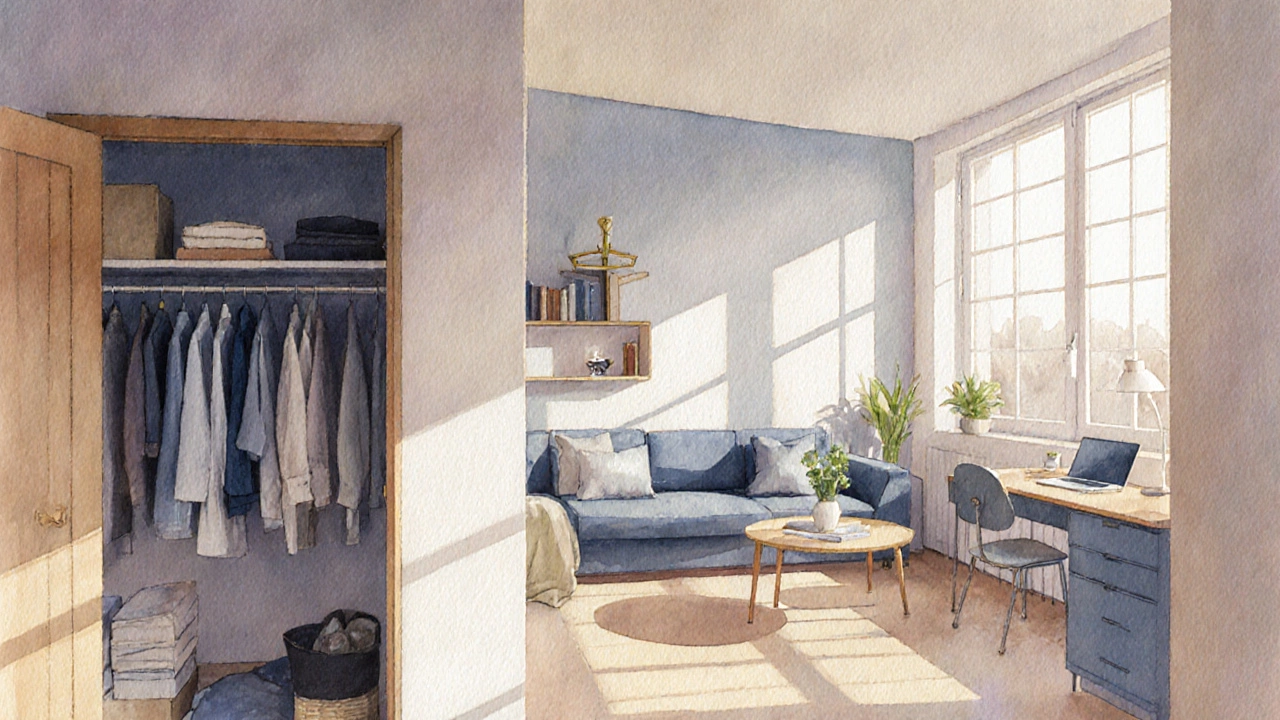
Quick Declutter Checklist
- Identify the first room using the scorecard.
- Set a clear, short‑term deadline.
- Gather three boxes: Keep, Donate, Trash.
- Empty the room completely.
- Sort items quickly, using the timer.
- Clean the empty space.
- Return only essentials, organized logically.
- Schedule donation drop‑off within 48 hours.
Room Comparison Table
| Room | Visibility (1‑5) | Clutter Volume (1‑5) | Emotional Impact (1‑5) | Recommended Start? |
|---|---|---|---|---|
| Entryway | 5 | 2 | 3 | Yes - Quick win |
| Bathroom countertop | 4 | 2 | 4 | Yes - Quick win |
| Living Room | 5 | 4 | 5 | After quick wins |
| Bedroom closet | 4 | 5 | 5 | High‑impact |
| Home office | 4 | 3 | 4 | Mid‑priority |
Frequently Asked Questions
What’s the best time of day to declutter?
Choose a time when you’re naturally energetic - often mornings after breakfast. Short, focused sessions (30‑45 minutes) work better than marathon sessions that lead to fatigue.
How do I handle sentimental items?
Set a limit - for example, three boxes of keepsakes. Photograph items you love but don’t need to keep the physical object. This preserves the memory without the clutter.
Should I declutter alone or involve my family?
Both have benefits. Solo sessions let you set the pace, while family involvement builds shared habits and distributes the workload.
What’s an easy way to keep a room tidy after decluttering?
Adopt the “one‑in, one‑out” rule and create a habit of returning items to their designated spot immediately after use.
How often should I repeat the declutter process?
A light refresh every 3‑6 months keeps things from piling up. Schedule a deeper session annually, focusing on the rooms that accumulate the most.
